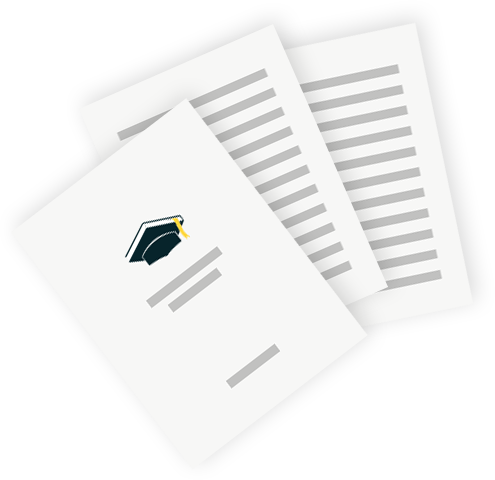Imagery brings your story to life. It paints a picture for your reader to connect with your characters and world, and it just makes your writing more interesting to read.
What is imagery?
Using imagery in your writing means writing tangibly with the five senses: sight, sound, taste, touch, smell. We often see sight and sound in writing, but if you can incorporate the less typical senses, combine them together, and use them creatively, you’ll sculpt a much richer picture for your readers.
When you use imagery of something familiar to someone, it can even elicit certain emotions intentionally. This is a powerful writing tool.
For example, if someone had a younger sibling and you describe the smell of baby powder, that’s a very strong olfactory memory and they’ll likely have memories of their childhood.
So if there’s a new baby in the house, what do older children typically feel? Usually either happiness or jealousy. So depending on how you frame it and the tone, you can purposely make certain readers feel something you want them to feel.
If you can learn to use imagery realistically, relatably, and with strong language, you can pull your readers into your narrative almost immediately.
Let’s look at the five senses and examples of how to use them to craft effective imagery.
Writing imagery with the 5 senses
Mastering the use of all five senses in prose takes a lot of practice. Let’s look at each sense individually with examples from one of my favorite books, I Am The Messenger.
Markus Zusak is known for using crisp and original imagery to illustrate both the mundane happenings of daily life, as well as extremely weird circumstances.
#1 – Visual
Visual imagery appeals to the reader’s sense of sight. Descriptions of things like colors, shapes, textures, and movement can all work with visual imagery.
Examples of visual imagery:
- “At one point, she holds her hands out, forming a cup. It’s like she’s holding her heart there. It’s bleeding down her arms.”
- “He sips on his longneck beer from start to finish and touches the whiskers that seem glued in patches on his man-boyish face.”
- “She looks at me, and she has sunshine-colored hair in a ponytail and clear eyes, like water. The mildest blue I have ever seen.”
These examples also use subtext. In the first one, we have a description of how the woman is sitting–her physical position–but we get so much more than that.
You can see her pain, but instead of just saying “she’s hurting,” Zusak makes the connection through how she’s holding herself.
#2 – Olfactory
Olfactory imagery appeals to the reader’s sense of smell. Descriptions of things like flowers, chemicals, mold, and burning food can all work with olfactory imagery.
Example of olfactory imagery:
- “He’s a cross between a Rottweiler and a German shepherd, and he stinks a kind of stink that’s impossible to rid him of. … The initial stink of dog slaps them in the face, and it’s all over. … I’ve even tried encouraging him to use some kind of deodorant. I’ve rubbed it under his arms in copious amounts. … During that time, he smelled like a Scandanavian toilet.”
Throughout the whole book, the main character talks about how much his dog stinks, how lazy he is, how he’s always in the way, etc., but there’s nothing he loves more than his dog.
The more he describes how gross the dog is, the more the reader can see that he clearly loves him.
#3 – Gustatory
Gustatory imagery appeals to the reader’s sense of taste. Gustatory and olfactory imagery can work together or cross over each other.
Sometimes you can taste smells, and that image might be richer than if you described it with an olfactory image.
Examples of gustatory imagery:
- “It’s older now and a bit stale, the mud cake. But the taste is perfect.”
This quote is taken from a scene where the main character spends time with a very old woman. The subtext here is obvious.
#4 – Auditory
Auditory imagery appeals to the reader’s sense of sound. Leaves crunching under your feet, birds singing, and a stream trickling can work together to describe an early Autumn day much more effectively than visual imagery on its own.
Examples of auditory imagery:
- “The Doorman snores. The breeze outside steps closer. The fridge buzzes.”
- “The ridiculous first notes of “Five Hundred Miles” come on, and I feel like going berserk. Even the Proclaimers are giving me the shits tonight. Their singing’s an abomination.”
A lot of new writers try to write with all senses and go hog wild, describing anything they can think to describe. You can see in all the examples so far that Zusak describes things that reflect how his character is feeling.
“The breeze outside steps closer” does a lot to convey the character’s apprehension–the character is alone, so he personified the breeze to make the character feel watched and nervous.
#5 – Tactile
Tactile imagery appeals to the reader’s sense of touch.
Itchy fabric, a biting cold wind, and a smooth marble describe touch, but what about thirst or the heavy feeling in your stomach when you know you’ve done something wrong?
Examples of tactile imagery:
- “The gun feels warm and sticky, like melting chocolate in my hand.”
- “The girl tries to crawl inside my jacket as the noise from the bedroom reaches us from inside. She hugs me so tight I wonder how her bones survive.”
- “I haven’t shaved, and I feel like death warmed up.”
Here are a couple extra examples that I thought did a good job of combining sense imagery.
- “On those nights, the silence of the street is swollen. It’s scared and slippery as I wait for something to happen.”
- “I suppose he’ll die soon. I’m expecting it, like you do for a dog that’s seventeen. There’s no way to know how I’ll react. He’ll have faced his own placid death and slipped without a sound inside himself. Mostly, I imagine I’ll crouch there at the door, fall onto him, and cry hard into the stench of his fur. I’ll wait for him to wake up, but he won’t. I’ll bury him. I’ll carry him outside, feeling his warmth turn to cold as the horizon frays and falls down in my backyard. For now, though, he’s okay. I can see him breathing. He just smells like he’s dead.”
I love the first example–he uses tactile imagery (swollen and slippery) to describe an auditory image. It’s also a good example of using labels effectively–had he said “He was scared,” that would have been weak writing. But describing the silence as “scared” is original and a great way to divert expectations of the label.
Showing vs Telling to increase imagery in writing
The easiest way to practice writing with imagery is to show instead of tell. This is probably something you’ve heard before, and with good reason: it’s one of the strongest writing skills you can develop.
Once you really understand what “showing” means, your prose will improve.
Telling is when you explain to the reader how to understand or feel something, instead of letting them experience it.
Showing is using description to convey the same things but in a subtler and more impactful way.
For these examples, I’m going to use excerpts from my short collection, Little Birds.
Let’s look at a “telling” version of an idea, then a “showing” version.
In my story Wolverine Frogs, the character is recovering from an attack.
A “telly” way to write the last lines could have been–
“I’m ashamed that I couldn’t stop what happened. I blame myself and hate that he moved on with his life and I can’t.”
The real ending I used is–
“The skin around my nails is still raw. I keep scrubbing them, even though his blood is long gone and replaced by my own many times over.”
The second example conveys what the first one does, but it does so with concrete imagery instead of labeled emotions and abstractions.
That example is showing instead of telling what a character is feeling, but you can show when you’re describing a scene as well.
My story called Winnow has a character observing her bedroom.
I could have said–
“I still live in my childhood room. It’s dirty and old and I wish I could move out.”
But what I wrote is–
“The yellow-tinged spot in the corner of my ceiling is growing with heavy summer rains this year, stretching toward my ceiling fan. The fan is out of balance and squeaks and wheezes with every slow rotation, blurring glow-in-the-dark stars that haven’t glowed in years.”
The description I used still shows that she lives in her childhood room, it’s dingy, she isn’t happy to be there–but it uses concrete imagery to do so.
Realistic and relatable imagery
You can write with the five senses all day long, but if your audience can’t connect to your writing with familiar imagery, it’s worthless.
Relatability is what allows your reader to connect to an emotion through the image.
You can take something that your reader has most likely never experienced and make it relatable through imagery.
For example, say your main character is a hired assassin, and they’re about to make their first kill–they’re nervous! If you describe someone being nervous to assassinate another person, it (hopefully) is not something your reader will find particularly relatable.
BUT
If you describe the way they feel and how they’re acting–fumbling hands, fast heartbeat, loud swallow, clenching teeth–that sure sounds like stage fright, doesn’t it? Most people have felt that way.
Even though your reader has never experienced murder, they’ve almost definitely felt nervous! This is what imagery does–it connects your reader to your story, even without them specifically relating to it.
Imagery is great, but language still matters
Using specific details grounded in relatable senses is great–but it still gotta sound nice. Here are some of the previous examples rewritten, with the same details, but… well, worse.
Original–
“The girl tries to crawl inside my jacket as the noise from the bedroom reaches us from inside. She hugs me so tight I wonder how her bones survive.”
A little worse–
“The girl claws at my jacket and gets close to hide from the sounds. She hugs me very tight.”
Original–
“She looks at me, and she has sunshine-colored hair in a ponytail and clear eyes, like water. The mildest blue I have ever seen.”
A little worse–
“She looks at me. Her blonde hair is in a ponytail and her eyes are blue.”
Original–
“The yellow-tinged spot in the corner of my ceiling is growing with heavy summer rains this year, stretching toward my ceiling fan. The fan is out of balance and squeaks and wheezes with every slow rotation, blurring glow-in-the-dark stars that haven’t glowed in years.”
A little worse–
“The ceiling is turning yellow where the rain leaks through. My ceiling fan squeaks loudly as it spins and blurs old glow-in-the-dark star stickers.”
Even with the same imagery, these examples became less effective when we removed the writer’s voice and original language. While you learn to write with solid imagery, pay attention to how you write it.
To strengthen your writing, show your story with relatable imagery, strong language, and all five senses!



